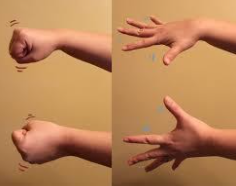THE WRITING METHOD
a suitable way to address what happened in case there is avoidant behaviour (author: J. Pennebaker)
- Write every day for three to five days
- Write for 15 to 30 minutes at a time, in a place where you will not be disturbed
- Write down your thoughts and deepest emotions regarding what happened
- What you write may be associated with the past, the present, or the future, with your relationships, how to the situation has affected you, and with your wishes for the present and the future.
In the beginning, after the first writing session, it may feel difficult – but do not let that discourage you. Persevere and continue. Research and experience have shown that the next writing sessions may give you significant emotional relief.
Stress experienced after a trauma may not just go away over time, but in certain cases can stay unchanged in a person’s brain, triggering strong reactions when reminded of the trauma.
Rear-view mirror
If you have a problem that seems insurmountable at the moment, the following mental exercise called the ‘rear-view mirror’ may be helpful.
- Imagine the future: for example, what would your life be like without the current problem? Look back in time.
- Try to figure out how you got there.
When a person imagines the future, they may weaken the grip that keeps them in the current situation. That may help them to see solutions and an escape from the situation instead. Try it!
Keep a cool head and focus
- Sitting behind a desk, breathe in and lift your shoulders to your ears.
- When breathing out, let your shoulders drop heavily, loosening the tension.
- Look up, stretch out your hands one at a time like you were trying to catch the sky.
- Vigorously rub your whole head, tap it with your fingers. Lightly pull your hair, loosen your arms.
- First pinch and then pat your jaw. Yawn and say (sigh) ‘ahhhh’.



